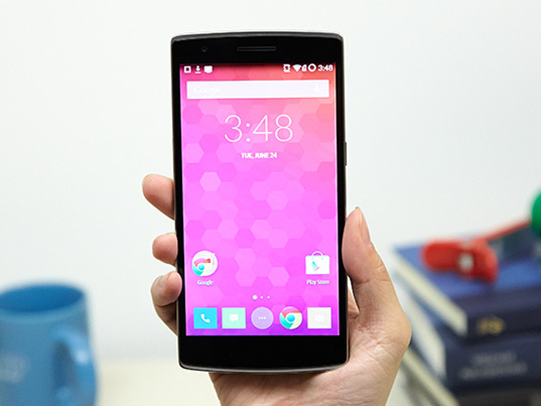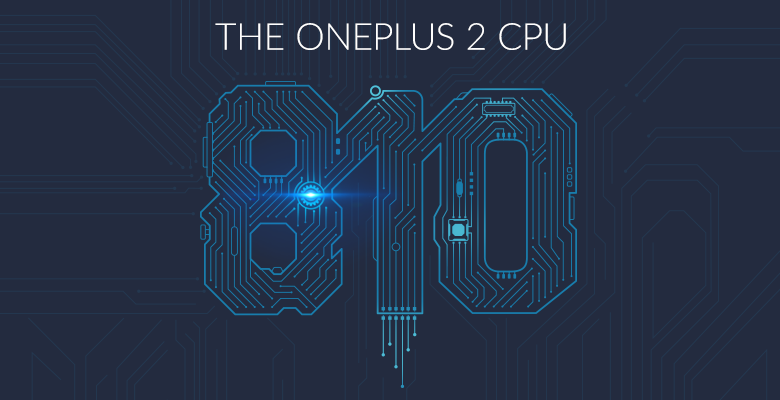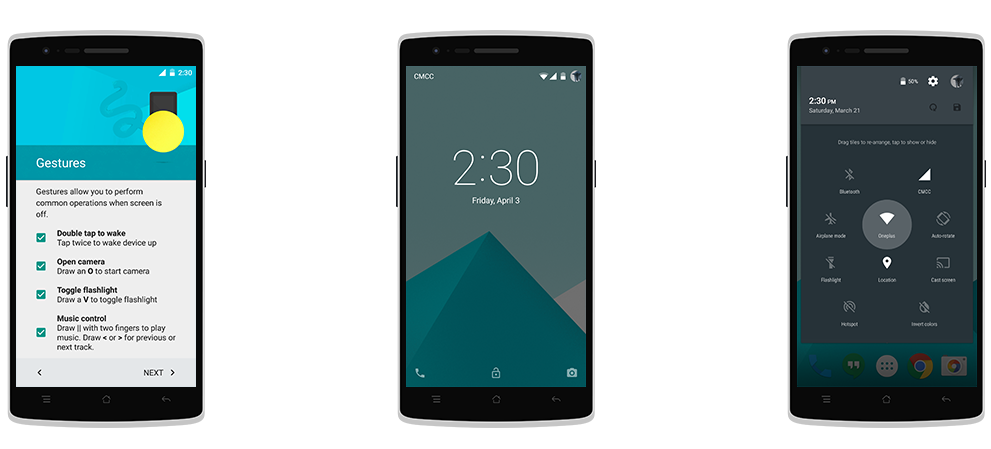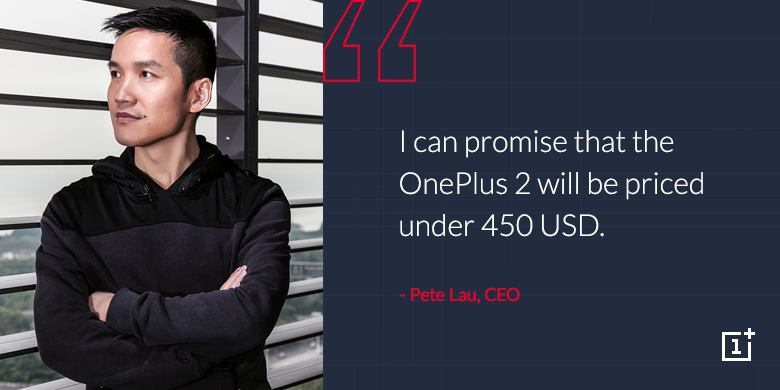Everything There Is To Know (So Far) About The OnePlus 2
Although it was a newcomer to the smartphone market, OnePlus managed to attract quite a bit of attention with its high-value-for-the-money OnePlus One device (our full review here), as well as with its controversial invite system, which at first only made people want it more.
OnePlus initially adopted an invite system because it wanted to operate on very thin margins in order to pack as many high-end features as possible into the handset. OnePlus wanted to ship a flagship device that was almost as good as other $600+ phones, but for only $300 (or $350 for the 64 GB version).
However, because the invite system limited how many people could get the phone, and because OnePlus learned how to scale its inventory better, the company eventually faded out the invite system. It began by taking pre-orders last fall and continued through this April, when the company announced that anyone can purchase the device anytime they wish.
Of course, by now the OnePlus One has almost reached its end of life, as many people were already expecting to see the OnePlus 2 launch soon. Since then, several features have been officially announced by the company for the OnePlus 2. Here's a roundup of what we know (and don't) about the upcoming phone.
Snapdragon 810 SoC (latest v2.1 revision)
The company confirmed that it will use the Snapdragon 810 v2.1 inside the OnePlus 2. The Snapdragon 810 may not be the best chip on the market right now, both from a technical and marketing perspective, as the chip itself was involved in an overheating controversy earlier this year. However, unlike Samsung, which just ended up using its own chip in the Galaxy S6 (and on a newer 14nm process to boot), OnePlus couldn't afford the same luxury.
There aren't too many third-party chip makers that can supply chips to smartphone OEMs right now. Nvidia has all but left the smartphone market, and Mediatek still isn't quite the strongest competitor at the high-end, although the company is pushing for increasingly higher-end chips with each new generation.
If the OnePlus 2 would have launched this fall, it could have probably used the 14nm Snapdragon 820 chip, which also contains Qualcomm's custom-made Cryo core. However, OnePlus has already said that the OnePlus 2 will launch on July 27.
Get Tom's Hardware's best news and in-depth reviews, straight to your inbox.
It's quite possible that Qualcomm has resolved most of its overheating issues by now, but it remains to be seen whether that was done through aggressive throttling, by significantly reducing the CPU's default peak frequency, or a combination of both.
4 GB of LPDDR4 RAM
The OnePlus 2 is likely to be the world's first smartphone that has not just 4 GB of RAM, but 4 GB of LPDDR4 RAM, which is the next generation of mobile RAM. It's debatable whether 4 GB of RAM is even needed right now on smartphones, considering you can't use two apps simultaneously on Android (except on some Samsung phones and tablets). However, it should still represent a significant feature of the OnePlus 2 in the eyes of potential customers, which should lead to more sales.
Fingerprint Sensor
The OnePlus 2 will join the group of the handful of smartphones that come with a fingerprint sensor. The company said its solution is "faster than Touch ID", but we don't know yet what kind of sensor it is, other than the fact that it's a "physical sensor" (implemented in a physical home button), which means it's likely not going to be Qualcomm's ultrasonic Sense ID fingerprint sensor.
A few days ago, the OnePlus 2's fingerprint authentication entered a controversy of its own, after the co-founder of the company, Carl Pei, implied in an interview with The Guardian that OnePlus would capture its customers' biometric information. He then added that the company could even authenticate the users to their devices before the devices ship to them.
So far, we've only had fingerprint readers that store encrypted templates of the fingerprints locally, on the devices, yet this would seem to imply that OnePlus can store those fingerprints on its own servers, and then send them to unlock the devices before they arrive to users.
However, if OnePlus could do this, that would also mean anyone who hacks the company's servers could access those fingerprints, as well. That's without even mentioning that countries in which OnePlus is based (including China, the company's home country) could legally demand access to those fingerprints.
Storing fingerprints in a centralized database is an incredibly dangerous thing to do, no matter how much more convenient it would make some features for users. When every person has only 10 possible fingerprints they could use in their entire lifetimes, giving even one of them to a government's agency, let alone a small private company, seems like an unacceptable level of risk. Once that database is hacked, and it contains the real fingerprint data, you could never use that fingerprint again, anywhere else.
In a comment on Reddit, Pei denied that this is what he meant and that in fact the fingerprint "templates" will always be stored locally.
“When it comes to privacy, we will always err on the side of caution. Product features related to privacy will be opt in rather than opt out. We're makers of products that we are proud of. Our users are not our product.The fingerprint sensor used on the OnePlus 2 will never store your data to a server or a cloud, only ever to your own personal device. And it will not be used by third party apps. The sensor we use doesn't even actually use your fingerprint itself, rather a template which the device can recognize."
USB Type-C
The OnePlus 2 will be one of the first smartphones to come with USB Type-C, the improved USB connector that has a reversible design, can charge faster (up to a maximum of 100 W and 20 volts), and can have a file transfer rate of up to 10 Gbps -- if it supports the USB 3.1 specification. However, it's not yet clear whether the OnePlus 2 will benefit from the maximum 10 Gbps transfer speeds of USB 3.1, or if it will support only USB 3.0 or 2.0 over the Type-C port. With flash storage speeds exceeding the speeds of USB 2.0 (about 30 MB/s) these days, it could certainly be better if the OnePlus 2 isn't limited to USB 2.0 transfer speeds, or even USB 3.0 for that matter, when transferring files to the phone or from the phone to the PC. (That's not to mention other benefits of USB 3.1.)
In the recent Reddit AMA, OnePlus implied that the new charger could also have a longer cable, as many users have complained before about the OnePlus One's short charger cable.
Battery
In the AMA, Carl Pei also said that the next-generation OnePlus 2 will have a slightly bigger battery than the original -- 3,300 mAh compared to the previous 3,100 mAh battery.
Supported GSM Bands
The OnePlus 2 will appear in two global versions and will work on the following GSM bands:
- US GSM: 850, 900, 1800, 1900 MHz WCDMA; Bands: 1/2/4/5/8 FDD-LTE; Bands: 1/2/4/5/7/8/12/17
- Europe GSM: 850, 900, 1800, 1900 MHz WCDMA; Bands: 1/2/5/8 FDD-LTE; Bands: 1/3/5/7/8/20
AT&T and T-Mobile will be supported, but Verizon's network won't be. The company also promised to support T-Mobile's Wi-Fi calling at a later date, through an OTA update.
Operating System
The OnePlus One launched with Cyanogen 11S (Android 4.4) last year, but since then there have been some conflicts between OnePlus and Cyanogen. The OnePlus One will continue to get the Cyanogen OS, but OnePlus 2 will come with OnePlus' own Oxygen OS.
It also doesn't stray too far from stock Android, so potential customers shouldn't be too upset about the change, as long as the company promises the same two years of upgrades as it did for OnePlus One.
Price
OnePlus's CEO, Pete Lau, confirmed on Twitter that OnePlus will be "under $450", which could mean its price will be $449, or it could have the base version start at $349 and then move upwards with more storage options. It's very likely, though, that the OnePlus 2 will be more expensive than the OnePlus One.
Invites
The company confirmed that OnePlus 2 will also be sold through an invite system, at least initially. As the company is still rather new, this was to be expected, although it probably won't please too many fans who are eagerly waiting to get their hands on the new device.
However, the invitation program may be terminated more quickly this time around, once the company has a good idea of how many OnePlus 2 smartphones it needs to manufacture every month.
Display
OnePlus has only mentioned that the new device will be "smaller" than the old one. It's not clear, though, just how much smaller it will be or whether it will have the same 5.5" screen size but with smaller bezels.
The resolution is also an unknown at this point in time. The company could pick either a more efficient 1080p panel that uses less power than the display in the OnePlus One, or a 1440p panel that uses roughly as much power as the old 1080p screen. Many Reddit users who participated in the AMA seemed to favor a more efficient 1080p version.
Camera
OnePlus also said in the recent AMA that the camera is a priority and that it will have "a bunch of things that we believe will set the OnePlus 2 apart," but the company declined to comment further until the July 27 launch.
Build Quality
Carl Pei, the co-founder, said that he is the most proud about the design and build quality of the OnePlus 2. He didn't elaborate as to why, so that's another thing we'll just have to wait and see about at launch.
If these promised specifications live up to the expectations, and the company manages to offer the device for a reasonable price while ensuring that it's not infringing on users' privacy and breaking their trust with the new fingerprint sensor, the OnePlus 2 could be another success story for the company.
Follow us @tomshardware, on Facebook and on Google+.
Lucian Armasu is a Contributing Writer for Tom's Hardware US. He covers software news and the issues surrounding privacy and security.
-
Quixit I was excited for the OnePlus Two until I read "Snapdragon 810", maybe the OnePlus Three will be a good purchase...Reply -
BulkZerker Processor : alright, long as its not more power hungry than my One is.Reply
Ram : neat, this will help keep power usage down. Maybe it'll provide more bandwidth too?
Fingerprint scanner : I hope I dont have to use it. My hands get dirty.
Battery : more is always great.
Supported bands: looks good too. Wish they supported vz, and the subsequent mmnvo's, dropped vz for the one. Couldn't be happier.
OS: I loved 11s. I hope oxygen lives up to that standard.
USB : sweet. No more jambing the cord in backwards.
Price : eeeeeeh its starting to get expensive. I might swing it if I can sell my one.
Overall? The hype train has its boiler up to temp.





